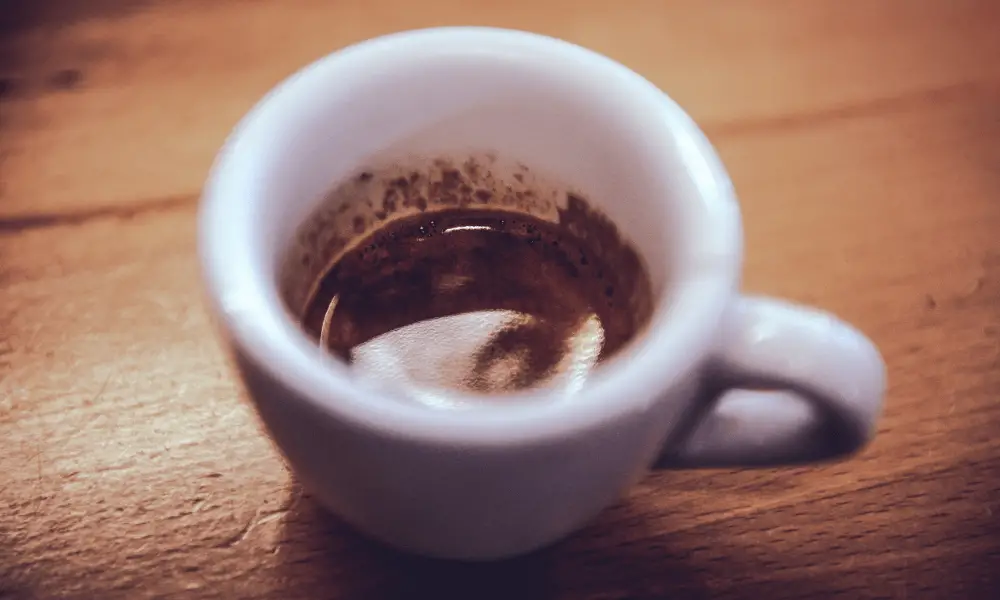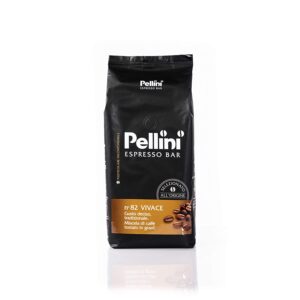
Espresso enthusiasts, aspiring baristas, and occasional coffee drinkers often wonder how long it takes for a shot of espresso to go bad or spoil. In the coffee community, this is referred to as a dead espresso shot.
An espresso shot is dead when its temperature cools down and the heart, body, and crema mix to alter the taste and texture of the drink. It takes 2 to 3 minutes for a shot of espresso to die, and not 10 seconds like some big coffee chains advertise.
Since it takes an average of 24 seconds to make an espresso, the idea of it dying after just 10 seconds makes little to no sense. Some believe it’s just a myth invented to make the coffee shop staff work faster.
What is a Dead Espresso Shot?
A well-known coffee shop chain used to train baristas that they should use espresso shots within 10 seconds of pulling them, after that they were regarded as “dead.”
Baristas should therefore make sure that these shots were used within 10 seconds or use them in some other coffee beverage.
The reason provided by the coffee chain during training is the “dead” espresso shots taste awful.
Like many statements used to make a point when training beginners, this 10-second rule has no foundation in fact and is something, half-understood, that has made its way into coffee folklore.
There is no evidence to suggest that espressos not drunk within 10-seconds are inferior.
Yes, there is an element of truth about the effect of time on espresso, but the fact has been confused with myth.
What Happens When an Espresso Shot “Dies”?
The taste of a fresh espresso should be hot, syrupy, and bittersweet.
An espresso left out for 2 or 3 minutes has different characteristics. Its crema foam dissolves back into the shot leaving a thin coating on the side of the glass.
When you taste that coffee, you will find the same syrupy texture, but the flavor will have changed into a slightly burned, ash-like, taste.
The second espresso drink is a dead espresso shot.
If you want to learn more about espresso, hot to pull the perfect shot, or which coffee beans you should for the best espresso you can find our guide here.

Espresso Crema
So, the “dying” is connected with the loss of crema and purists will state that the crema will have gone within 10 seconds (does it?) and so the drink should be served and consumed within this time frame to be at its optimum state.
This might make sense in laboratory conditions, but in reality, for the barista to create the espresso, serve it, and then for the consumer to return to a table and then drink it, all with 10 seconds, is a bit unrealistic.
Within that period the drink will still be so hot that it will possibly burn the mouth.
Crema is that layer of foam that sits on top of the coffee and creates a protective barrier against the air.
When the coffee comes into contact with the air, it starts oxidation.
We wrap most foods to avoid them oxidizing and going stale, the crema carries out the same job.
The crema is created when the water, oils from the coffee, and CO2 mix together. Crema has no taste, it is only the fact that it acts as a barrier to oxidation that we consider it.
Oxidation
So, it is this oxidation process that changes the flavor of the coffee, not the lack of crema.
Crema, if the coffee is made correctly will last longer than 10 seconds, possibly a couple of minutes, which is a much more realistic timescale for a real coffee shop situation. It is only after the crema has gone that oxidation begins.
Instead of happening instantly, it’s a progressive process. It follows then that to enjoy your coffee at its optimum (or near optimum) state, you have 2 to 3 minutes, and the espresso will progressively get worse from there.
Temperature
Now we look at temperature. Think about two cans of Coca-Cola. One of the cans is room temperature, the other is well chilled.
Do they taste the same, after all until the moment you open the can, they are both protected from oxidation. They are the same product, the only difference is the temperature.
I know that more people will enjoy the taste of Coca-Cola when it is in a chilled condition than when it is warm. So, the temperature is a factor in how we taste things. It is the same with coffee. The temperature will have an impact on the taste of the espresso.
If we drink our espresso while it is scalding hot, within 10 seconds of being brewed, are we really getting the best taste?
When baristas are competing at top-level competitions, you may have noticed that they ask the judges to pause for a moment after the coffee is brewed, to allow it to slightly cool down.
Alternatively, they may ask the judge to stir the coffee thoroughly, thus bringing down the temperature.
Top-level baristas are certainly not buying into the “10-second rule.” Great baristas understand that if a coffee is served extremely hot, that the drinker will be aware of temperature and body, much more than the subtle flavors.
It is those subtle flavors that make a “Great cup of coffee.” The closer that coffee gets to body temperature, the more flavors will emerge. That is the reality that destroys the 10-second rule myth.
Summary
The ten-second rule is a gross simplification and should not be taken as science.
It was originally someone’s way of suggesting that trainee baristas move the coffee quickly. I doubt it was meant to be taken seriously.
Espresso does not “die” after 10 seconds. Espresso will begin to oxidize when the layer of crema has disappeared.
The time the crema takes to go will depend on the amount of coffee extracted when brewing, and several other factors.
Related Questions
Does an Espresso Become Less Strong After 5 Minutes?
An espresso left for five minutes has the same amount of caffeine as a freshly pulled shot.
How Long Does the Crema Last on An Espresso?
A good barista will aim to have a crema that takes up 10% of the volume of a shot. A good crema should last for an average of two minutes. (so much for the 10-second rule).
Why Does Some Crema Last Longer Than Others?
If coffee is ground too coarse then the water does not absorb so much of the coffee particles. You are not extracting enough coffee and when these fragments of coffee extract mix with air, and hot water, it makes thin watery crema that does not last.
I’ve always seen coffee as a way of bringing people together. Everywhere I go people seem to enjoy a fresh cup of coffee and that’s what drives my passion. There’s always a new brew to master, and there’s always a new face to enjoy it with. Hitch a ride with me on a coffee-fueled adventure to find a perfect cup.


